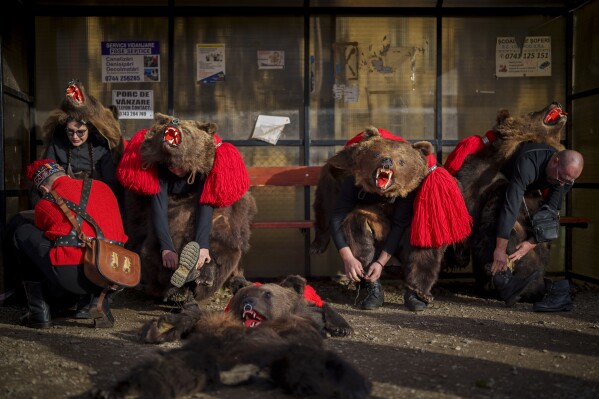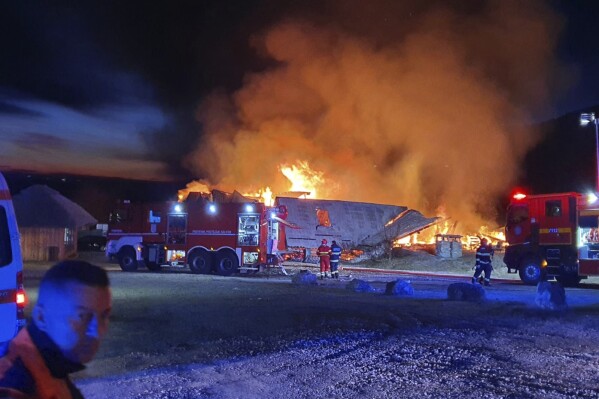AP PHOTOS: Dancing with the bears lives on as a unique custom in Romania
COMANESTI, Romania (AP) — A small industrial town in northeast Romania may seem like an unlikely tourist destination, but Comanesti is where huge numbers of visitors from as far away as Japan choose to spend part of the winter holiday season.
They converge here to see an annual event that grew out of a millennia-old tradition in the Moldavia region: Bearskin-clad people of all ages, organized in packs, marching and dancing to the deafening sound of drums in several rows of gaping jaws and claws.
The Dancing Bears Festival, as the custom has become known, starts in the days before Christmas and ends with a spectacular finale in Comanesti on Dec. 30. Some of the “bears” jokingly growl or mock an attack on spectators.
The bearskins the dancers wear, which can weigh as much as 50 kilograms (110 pounds), are passed on from generation to generation. The packs carefully guard the methods they use to keep the furs in good condition and ready to wear the next year.



One of the more established groups is the Sipoteni Bear Pack, named after a neighborhood of Comanesti, where its founder, Costel Dascalu, was born. It has up to 120 members, some who started participating at age 3.
“My children, Amalia and David, are already in the pack,” said Dascalu, who was 8 years old when he first danced dressed as a bear when Romania was still a communist dictatorship. Back then, he recalled, it was a much more low-key spectacle, with the “bears” only visiting private homes around Christmas.
Locals say the custom dates to before Christianity, when it was believed that wild animals guarded people from misfortune and danger. Dancing bears, therefore, went to people’s homes and knocked on their doors for luck and a happy new year.
While having their portraits taken, members of the Sipoteni Bear Pack shared with the The Associated Press some of their reasons for making sure the ritual continues.
Preserving tradition was a recurring theme. But some pack members said they get an adrenaline rush from wearing an animal’s fur, dancing to tribal drum rhythms and socializing with other young people in real life instead of online. Many said they feel they are briefly embodying a bear’s spirit.
“I feel liberated, The bear frees our souls,” said one participant, Maria, who joined the Sipoteni Bear Pack as a 5-year-old and is now 22. “I also connect to my departed father who introduced me to the tradition 17 years ago.”
Residents are happy that the tradition lived on as the region lost much of its population starting in the 1990s, when many people left to look for jobs in Western Europe after the fall of communism.
A 35-year-old, Marian, returns every year from abroad to dance with the pack she has belonged to since age 6.
“I hope our children will make this unique custom last forever,” she said. “I can imagine quitting anything, but I’ll never quit doing this”
Disclaimer: The copyright of this article belongs to the original author. Reposting this article is solely for the purpose of information dissemination and does not constitute any investment advice. If there is any infringement, please contact us immediately. We will make corrections or deletions as necessary. Thank you.
